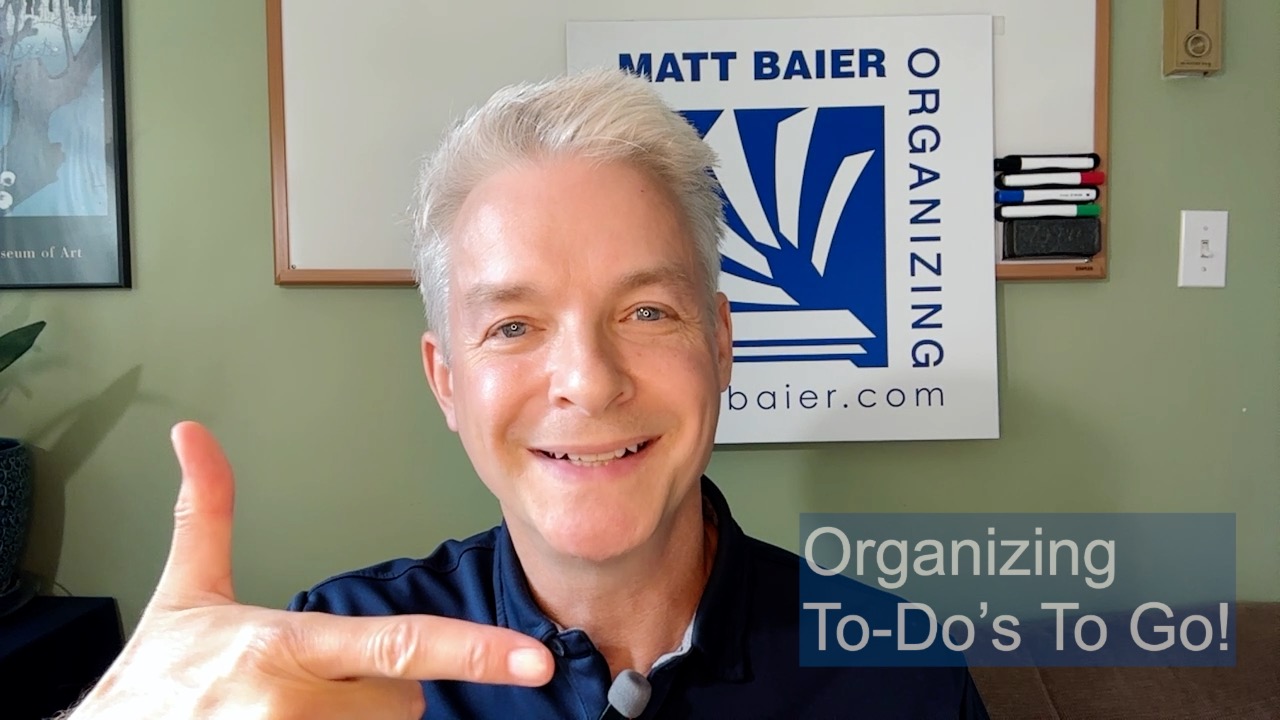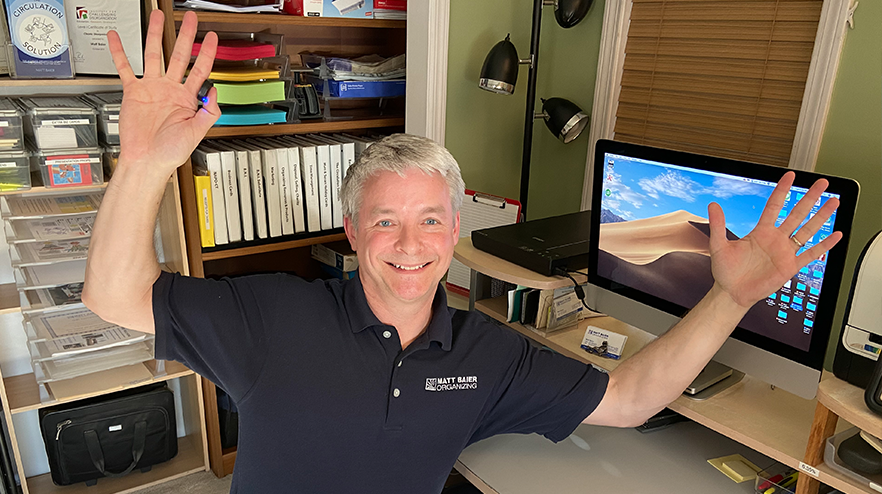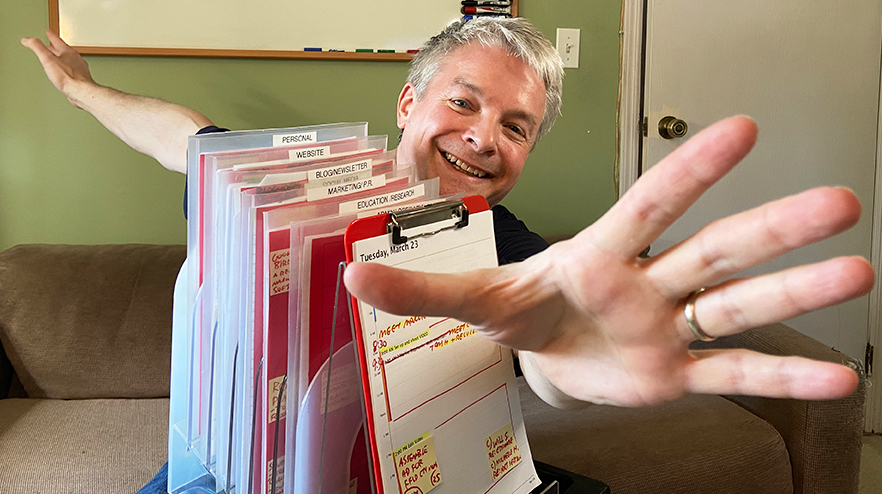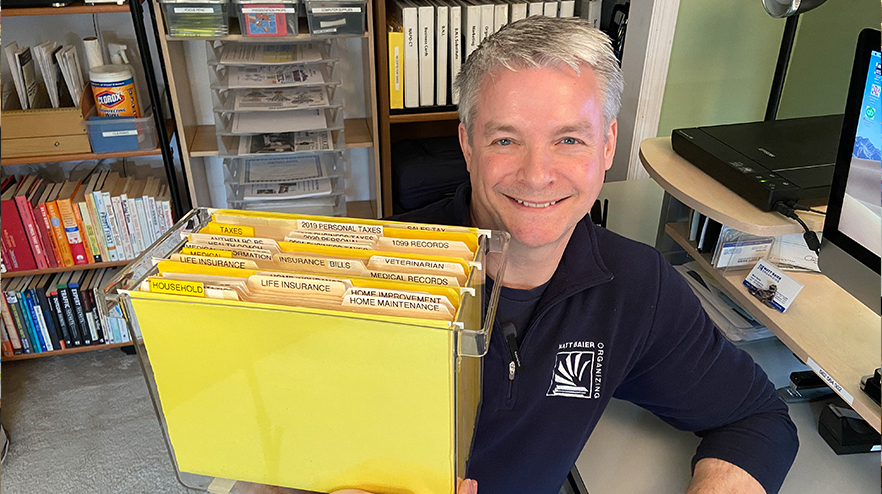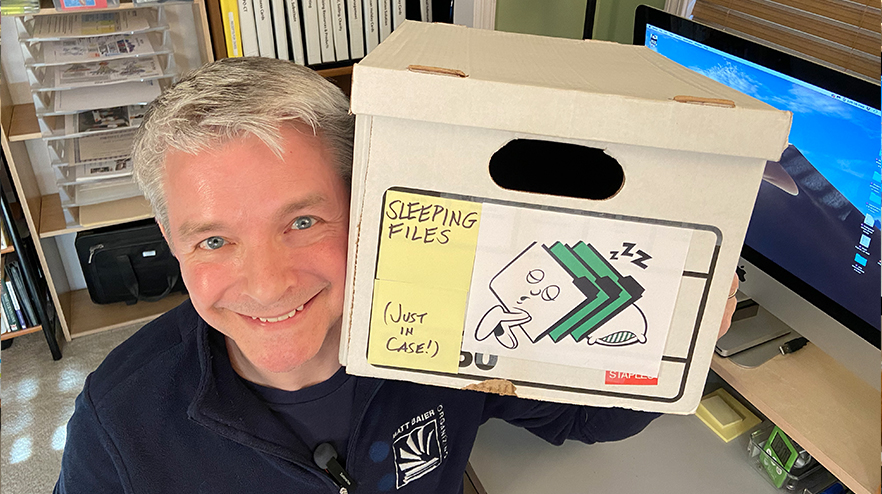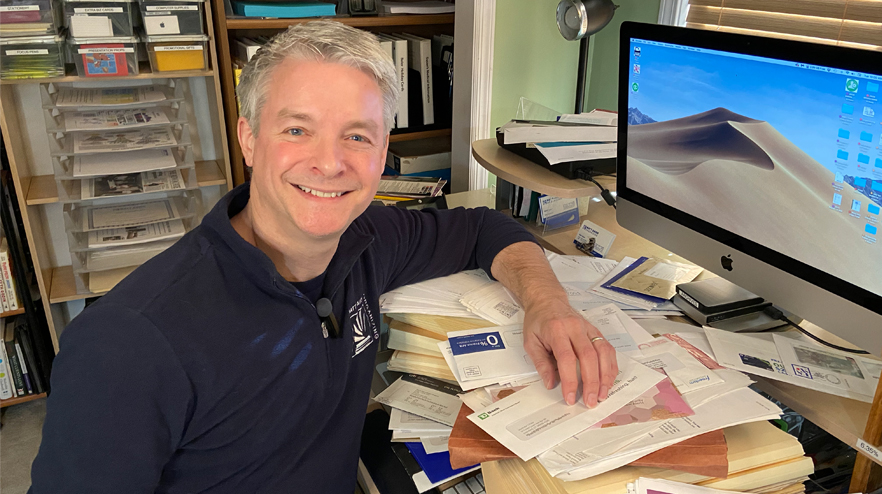Would you say there is more of a paper drain or paper trap in your work environment? In other words, does paper circulate easily, like water down a drain, or does it accumulate, like water in a plugged sink?
If a sink is overflowing with water, we want the plumber to fix what is plugging up the drain IMMEDIATELY! When I am called in to fix an overflow of paper, however, the concern is with a system for the urgent papers, sitting at the top of the pool.
I’m more like a plumber than you might think. The answer to processing your most urgent papers on top also starts at the BOTTOM. If there is one consistent approach I take to getting organized it is this: take the less important stuff out of the way so that you can get to the more important stuff. Here’s how to create a paper drain.
Trash Drain
Start with your trashcans. No, seriously. Are they big enough? Do they have a good structure? You’re not using sloppy shopping bags, are you? Is there a crystal clear distinction between toss, recycle, and shred? For further details, check out my blog Trash Systems Go!
Archive Drain
So much of the paper that accumulates falls under the category of “I need to keep this just-in-case.” Fine. I get that. There’s no reason to make a discard you may regret, but there’s also no reason this space-gobbler needs to share space with the files you need to find most reliably. Here’s how to make the distinction so you can store archives more remotely.
Findable Drain
Once you have established effective systems for draining trash and archives, it’s time to look at a system for draining paper you need to find reliably from that pile of action items on your desk. The answer to this drain is truly user-friendly files.
Linkable Drain
You should now have no paper on your desk, other than files you want to MAKE A POINT OF ACTING ON. This can still be a sizable quantity. You face the best odds of getting your to-do’s to done when they are vertical, visible, and minimal. The key to minimizing your to-do’s comes from the Newspaper Headlines model. You can be relieved of the quantity as long as you have the link. Here’s how.
When I was in art school I was fortunate enough to have, as one of my instructors, master storyteller and creator of the Spirit, Will Eisner. Mr. Eisner always stressed that if you want to tell a good story, start with the END and work forward. Similarly, if you want to have the most effective paper management system in your home or office, start with the drain at the end and work forward.
Please Share With Your Community
Related Posts
Testimonials
What some of our clients are saying
Imagine An Organized Home









